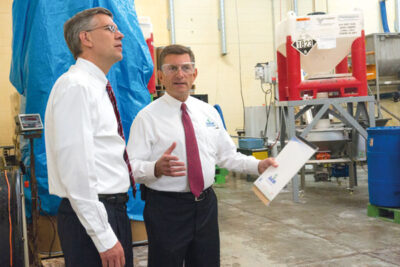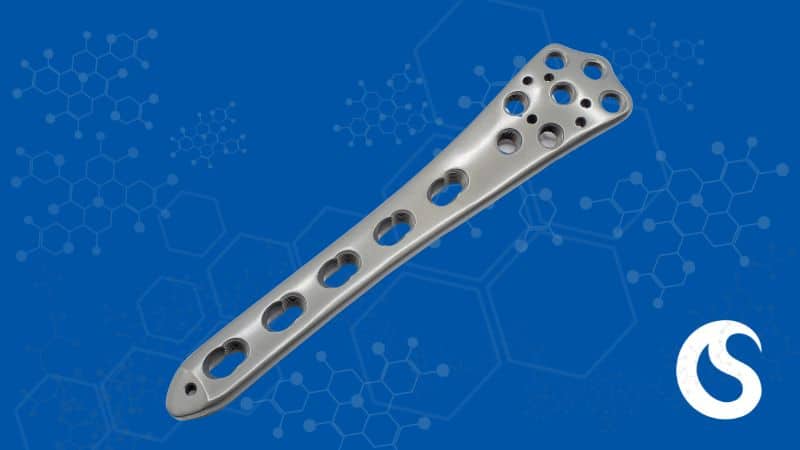This month, we’ve partnered with the regenerative agriculture experts at ST Biologicals to learn more about the forgotten element required for soil health: magnesium. You can learn more about ST Biologicals on their website or by following them on LinkedIn.
Industrial agriculture is focused on NPK, and other nutrients are secondary thoughts. This is understandable because historically, the only metric has been yield. It only mattered that there was enough phosphorus in the soil at seed sprout, enough potassium for rapid growth in spring, and enough nitrogen for fruiting development.
But as every farmer knows, agriculture is far more complex than that. For decades, we’ve relied on the indigenous micronutrients in the soil for optimum crop yield. But these micronutrients are gone in many parts of the world. Over 40% of the world’s arable soil is acidified. Magnesium (Mg) deficiency is one result. (1)
As an industry, we’ve overlooked magnesium nutrition in crop production. Its application rate rarely matches the removal rate. High-yielding crop varieties and the leaching of Mg with soil acidification are depleting indigenous soil Mg reserves. The degree of Mg deficiency is increasing in almost all production systems.
Magnesium is naturally found in most soils with igneous rock as parent rock. Clay soils have higher concentrations of Mg because of the chemical charge. Plants primarily capture Mg through their roots. Because Mg is water soluble, this happens more efficiently when the soil water is adequate. That means it’s not effective during a drought.
Traditional thought has been that liming the soil was supplying an adequate amount of magnesium, but in some cases, that farming practice is creating an imbalance in the soil. It adds Mg, but it also adds calcium, which your soil may not need. It also changes the pH of your soil, and sometimes your pH is just right. Mg is often the limiting nutrient in row cropping and high-nutrition pastures.
Why Is Magnesium Important for a Plant?
Magnesium is the fundamental component of chlorophyll and is actually considered a macronutrient by many crop specialists. Without Mg, photosynthesis isn’t optimal. Nearly 35% of Mg absorbed by plants is tied up in chlorophyll pigments. It’s what makes your plants that beautiful green.
Protein synthesis and other biological activities are also facilitated by magnesium. Enzymes such as RuBisCo, phosphatases, and glutathione synthase need magnesium to kickstart activity. These aren’t words we routinely kick around while talking to the fertilizer agent.
But they’re only a few of the enzymes your certified crop consultants know about and why they are adamant you test for all nutrients in your soil, including magnesium.
In our ever-increasing erratic weather patterns, Mg is beneficial for stress tolerance, energy metabolism, and pollen development. Mg works by competing with other cations, especially aluminum, for plant uptake. It also enhances plant antioxidant systems. These functions are just as critical as photosynthesis.
Magnesium is a highly mobile element in the plant. That’s valuable because a plant can store excess Mg and move it to new growth as needed. This is especially important when abiotic stresses cause Mg to be deficient in the soil. It is also the cause of a great deal of Mg leaching when the application rate is too high or applied at a time when the plant isn’t actively taking up the nutrient. (2)
We know magnesium is an essential nutrient for optimum plant health, yield, and nutritional profile, the next question becomes: What’s the best form and how do you source it?
Where Do You Source Magnesium for Optimum Crop Growth?
Most farmers and ranchers consider the magnesium included in dolomitic lime to be sufficient for plant growth. If you’ve had Mg deficiency symptoms in past crops, you may be adding Mg as a preventative. We recommend soil tests to confirm a Mg deficiency, as many nutrient deficiencies look similar to each other.
Magnesium can be applied in many forms, some are more plant-available than others. Magnesium sulfate (Epsom Salts) is one form of Mg, but it will decrease the pH, so it’s not good on acidic soils. Dolomitic lime is the predominant source of Mg addition to soils.
There are numerous organic sources of magnesium that you may have right on your farm. Compost and manure are two sources of Mg. They are also sources of many other micronutrients and beneficial microbes.
Animal manures are only as nutritious as the feed your livestock ate, so keep that in mind. Grazing in a pasture with a balanced micro-macro nutrient profile yields healthy livestock and nutrient-dense manure. Many manures are also high in nitrogen so be sure and age your manure before spreading it on your fields.
For gardens, as opposed to fields, there are many other sources of magnesium. Banana peels and wood ash are two that come to mind. Neither is appropriate at the scale of commercial farms, but are something to consider for your garden.
Recommended Source of Magnesium
We recommend Q-Bio Magnesium 3.0% to our clients. It can be used as either a foliar or soil spray and is nontoxic to leaves. The uptake of plant nutrients from foliar or soil sprays is more efficient when nutrient ions are bound with polysaccharides. Q-Bio Magnesium has that polysaccharide base that allows Mg ions to pass through the plant leaf cuticle and stomata. The Mg ion is also protected from binding to other soil elements when it’s complexed with polysaccharides.
You get more nutrients in the plant, less bound in unavailable forms in the soil, and less leaching of Mg ions when you use foliar spray. To find out more about Q-Bio Magnesium and Mg deficiency in your fields follow this link.
ST Biologicals is here to help you succeed. When soil speaks, we listen.
SOURCES





